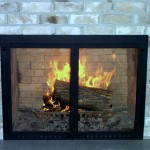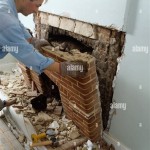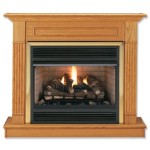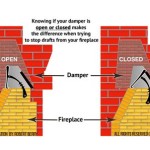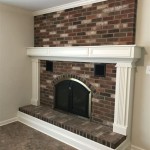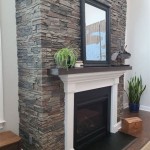Marble Look Tile: Enhancing Your Fireplace with Timeless Elegance
Fireplaces serve as focal points in living spaces, providing warmth, ambiance, and a touch of sophistication. The materials used to surround and construct a fireplace significantly impact the overall aesthetic. Marble, traditionally associated with luxury and timelessness, has long been a favored choice. However, genuine marble can be costly and require significant maintenance. Marble-look tile offers a compelling alternative, providing the visual appeal of marble with enhanced durability, affordability, and ease of care. This article explores the benefits, types, installation considerations, and maintenance aspects of using marble-look tile for fireplaces.
Benefits of Marble-Look Tile for Fireplaces
Marble-look tile presents a range of advantages over natural marble, making it a practical choice for fireplace surrounds and hearths. These benefits address both aesthetic and functional considerations.
Cost-Effectiveness: One of the most significant advantages is the reduced cost compared to genuine marble. Marble extraction, processing, and transportation contribute to its high price point. Marble-look tile, typically made from porcelain or ceramic, offers a significantly lower price per square foot, allowing homeowners to achieve the desired marble aesthetic without exceeding their budget. This affordability makes it accessible to a wider range of consumers.
Durability and Longevity: Porcelain and ceramic tiles are known for their durability and resistance to wear and tear. They are less susceptible to scratching, chipping, and staining compared to natural marble, which is a porous material. This durability is particularly important for fireplaces, as they are exposed to potential impacts from fireplace tools and the accumulation of soot and ash. A durable tile ensures a longer lifespan and reduces the need for frequent repairs or replacements.
Ease of Maintenance: Marble-look tile is significantly easier to maintain than natural marble. Marble requires regular sealing to prevent staining and water damage. It also requires careful cleaning with pH-neutral cleaners to avoid etching or discoloration. Marble-look tile, on the other hand, is non-porous and resistant to stains. It can be easily cleaned with common household cleaners and does not require sealing, saving time and effort on maintenance.
Design Versatility: Advances in tile manufacturing technology have enabled the creation of marble-look tiles that closely mimic the appearance of various marble types. These tiles are available in a wide range of colors, veining patterns, and sizes, offering homeowners greater design flexibility. Whether the desired look is the classic elegance of Carrara marble, the dramatic veining of Calacatta marble, or a more subtle and contemporary design, marble-look tile can accommodate diverse aesthetic preferences. The consistency in pattern and color, achievable through manufacturing processes, is often preferred for certain design schemes.
Resistance to Heat and Moisture: Fireplaces are inherently exposed to heat. Porcelain and ceramic tiles are inherently fire-resistant, making them suitable for use around fireplaces. They can withstand high temperatures without cracking, warping, or discoloring. Furthermore, these tiles are water-resistant, preventing moisture damage from spills or condensation. This is particularly beneficial in areas with high humidity or where the fireplace may be exposed to moisture.
Types of Marble-Look Tile
Marble-look tile is primarily manufactured using two main materials: porcelain and ceramic. Each material offers distinct characteristics that influence its suitability for fireplace applications.
Porcelain Tile: Porcelain tile is made from a denser clay and fired at higher temperatures than ceramic tile. This process results in a tile that is harder, more durable, and less porous. Porcelain tile is highly resistant to water absorption, making it an excellent choice for areas exposed to moisture, such as fireplace surrounds. It is also more resistant to scratching and chipping, making it suitable for high-traffic areas or areas prone to impact. Porcelain tile is available in a wide range of finishes, including polished, honed, and textured surfaces, allowing for diverse design options. Its durability and water resistance generally make it a preferred choice for fireplace applications, despite being slightly more expensive than ceramic.
Ceramic Tile: Ceramic tile is made from a less dense clay and fired at lower temperatures than porcelain tile. It is generally more affordable than porcelain tile and is relatively easy to cut and install. Ceramic tile is suitable for fireplace surrounds that are not exposed to excessive moisture or heavy traffic. However, it is more porous than porcelain tile and may require sealing to prevent staining. Ceramic tile is also more susceptible to scratching and chipping. While suitable for some fireplace designs, its limitations in durability and water resistance make it less ideal than porcelain for many fireplace projects.
Large Format Tiles: Both porcelain and ceramic marble-look tiles are available in large format sizes. Large format tiles offer a seamless and modern aesthetic by minimizing grout lines. Fewer grout lines create a cleaner look and make the surface easier to clean. They also enhance the visual impact of the marble pattern, creating a more luxurious and expansive feel. The larger size can also result in faster installation. However, installing large format tiles requires a perfectly level subfloor and experienced installers to avoid cracking or uneven surfaces.
Installation Considerations for Marble-Look Tile Around Fireplaces
Proper installation is crucial for ensuring the longevity and aesthetic appeal of marble-look tile around a fireplace. Several factors need to be considered during the installation process.
Substrate Preparation: A solid and level substrate is essential for a successful tile installation. The substrate should be clean, dry, and free of any debris or loose particles. Concrete, cement board, or plywood are common substrate materials. Any unevenness or imperfections in the substrate should be addressed before installing the tile. Self-leveling compounds can be used to create a perfectly level surface. Failure to properly prepare the substrate can result in cracked tiles, uneven surfaces, and grout line issues.
Mortar Selection: Choosing the correct mortar is critical for bonding the tile to the substrate. A modified thin-set mortar is typically recommended for installing marble-look tile, especially porcelain tile. Modified thin-set mortar contains polymers that enhance its adhesion and flexibility, providing a strong and durable bond. It is also important to choose a mortar that is appropriate for the specific type of tile and substrate being used. Consult the tile manufacturer's recommendations for the best mortar choice.
Grout Selection: The grout color and type can significantly impact the overall appearance of the tiled surface. Epoxy grout is a durable and stain-resistant option that is particularly suitable for high-traffic areas or areas exposed to moisture. Cement-based grout is a more affordable option but may require sealing to prevent staining. The grout color should complement the tile color and the overall design scheme. Consider using a grout color that blends with the tile to create a seamless look or a contrasting grout color to highlight the tile pattern. Grout lines should be consistent and uniform in width.
Cutting and Shaping: Cutting and shaping marble-look tile may be necessary to fit around fireplace openings, corners, or other architectural features. Wet saws with diamond blades are commonly used to cut tile, providing clean and precise cuts. Safety precautions, such as wearing safety glasses and gloves, should be observed when using power tools. Consider the placement of cuts beforehand to minimize waste and ensure a professional finish. For intricate cuts or curves, professional tile installers may be required.
Sealing: While marble-look tile is inherently less porous than natural marble, sealing the grout lines is still recommended to prevent staining and water damage. Grout sealers penetrate the grout and create a protective barrier, making it easier to clean and maintain. It is important to choose a sealer that is compatible with the grout type and follow the manufacturer's instructions for application. Sealing should be done after the grout has fully cured.
Expansion Joints: Expansion joints should be installed in large tiled areas to accommodate movement and prevent cracking. Expansion joints are typically filled with a flexible sealant that allows for expansion and contraction due to temperature changes or structural movement. Consult with a qualified contractor to determine the appropriate placement and type of expansion joints for the specific fireplace installation.

These Tiled Fireplaces Are Swoon Worthy Tileist By Tilebar
Fireplace Feature Wall Ideas Queen City Stone Tile

A White Marble Tile Fireplace Update The Diy Playbook Makeover Remodel Surround

Marble Fireplace Makeover Centsational Style

Adding Marble Subway Tile To Fireplace Surround The Diy Playbook

Our 200 Marble Fireplace Makeover Young House Love

Hilldale Avenue Home Remodel Trubuild Construction Fireplace Tile Living Room Decor

Fireplace Feature Wall Ideas Queen City Stone Tile

Marble Tile Fireplace Makeover Deeply Southern Home

Marble Look Tile Collection Porcelain Ceramic
Related Posts

